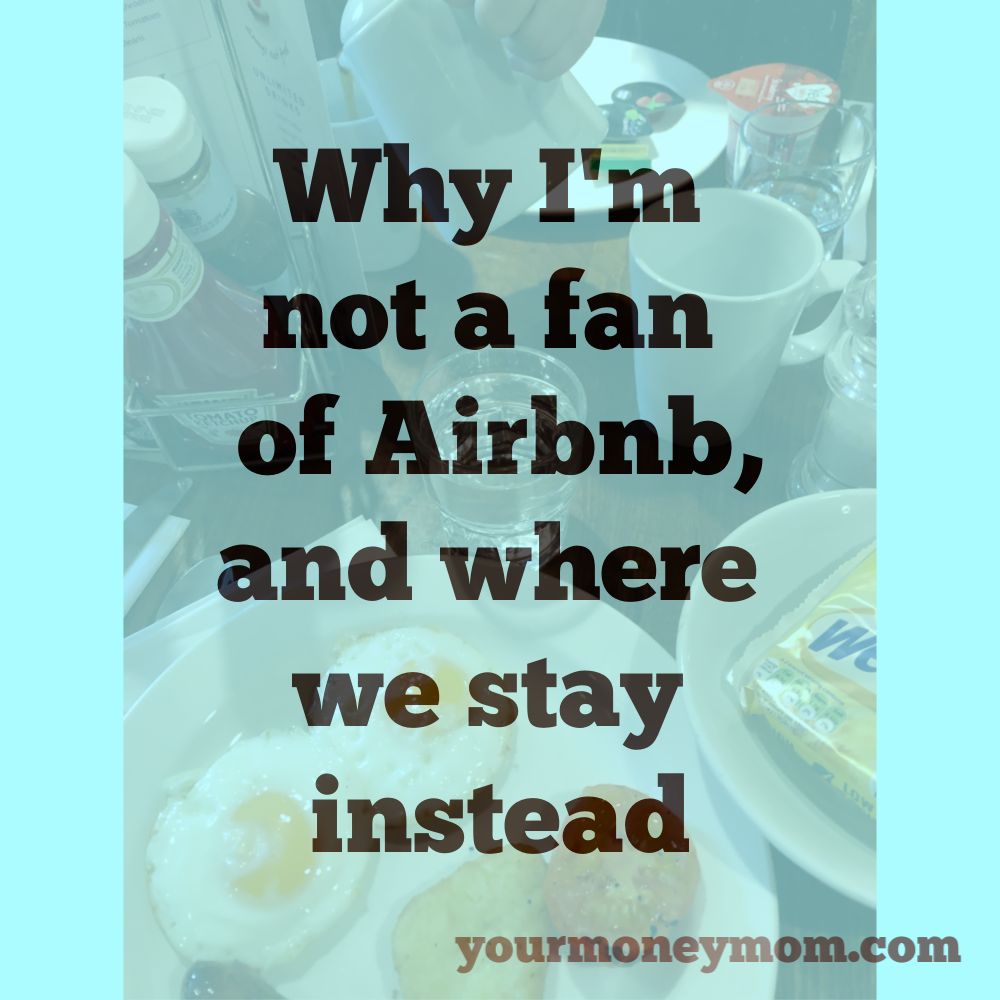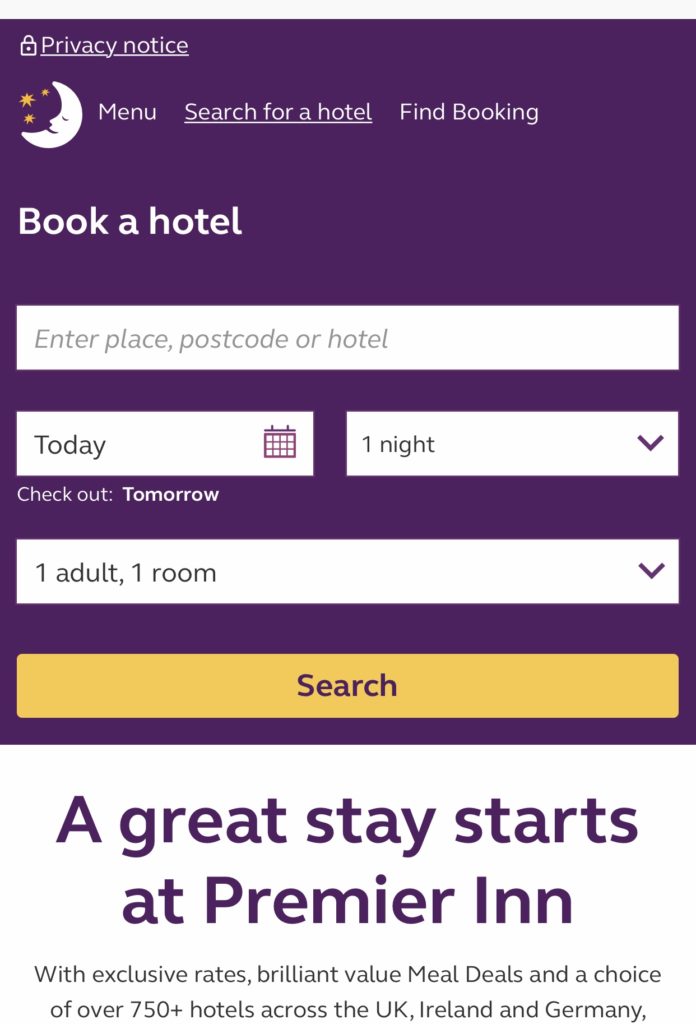THIS POST MAY CONTAIN AFFILIATE LINKS. PLEASE SEE MY DISCLOSURE FOR MORE INFO.
Eating good and different foods is one of the best parts of travel.
I may say this because I’m Italian, but I’m not wrong. Who would disagree?
In fact, at one point I considered titling this post, “I’m getting hungry again.”
This post is the third in a series. I’ve written about transportation and places to stay in Europe, and now food.
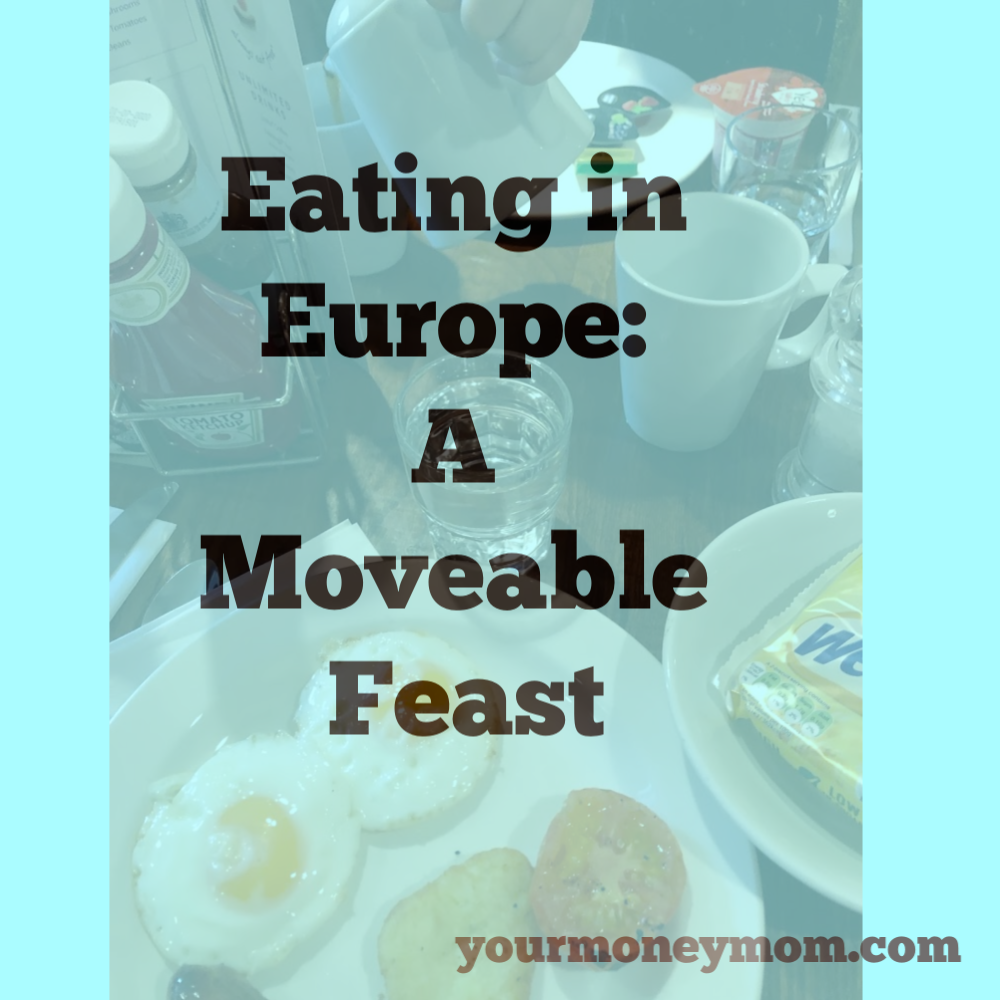
My overall theme here is to give you my perspective on travel in Europe. It’s one person, or really one family’s, experiences.
Other people or families do things differently—spending less or much more than we do, staying or traveling or eating in different ways—but overall I am happy with how we manage to keep well fed and happy.
(As with all travel, I make notes as I go to try to improve on future visits, so you will notice these at various places.)
Similar to my view of staying, my overall theory on food is to try local foods as much as possible. But “local” includes restaurants or locations that have multiple locations, even if they are not “chains” in the traditional American understanding of it.
The best croissants in the world
Oddly, I don’t feel that I ate as well in France as we did in England. Easily the best meal we had in France was a super-simple, but delicious, roast chicken and vegetables at the house of my daughter’s host family. But, not surprisingly, probably the best thing we ate in all of our travel were the croissants throughout Paris.
Breakfast
Let me just go through a typical day:
Breakfast: this was the best, often. It was a croissant or other pastry from a local patisserie. So delicious, and definitely worth it. Normally, if I don’t eat protein for breakfast, I will get sleepy or sluggish. But we were often walking and so busy through the day that the pastries were the right kind of fuel. Or maybe it’s something about France.
The magic of Carrefour
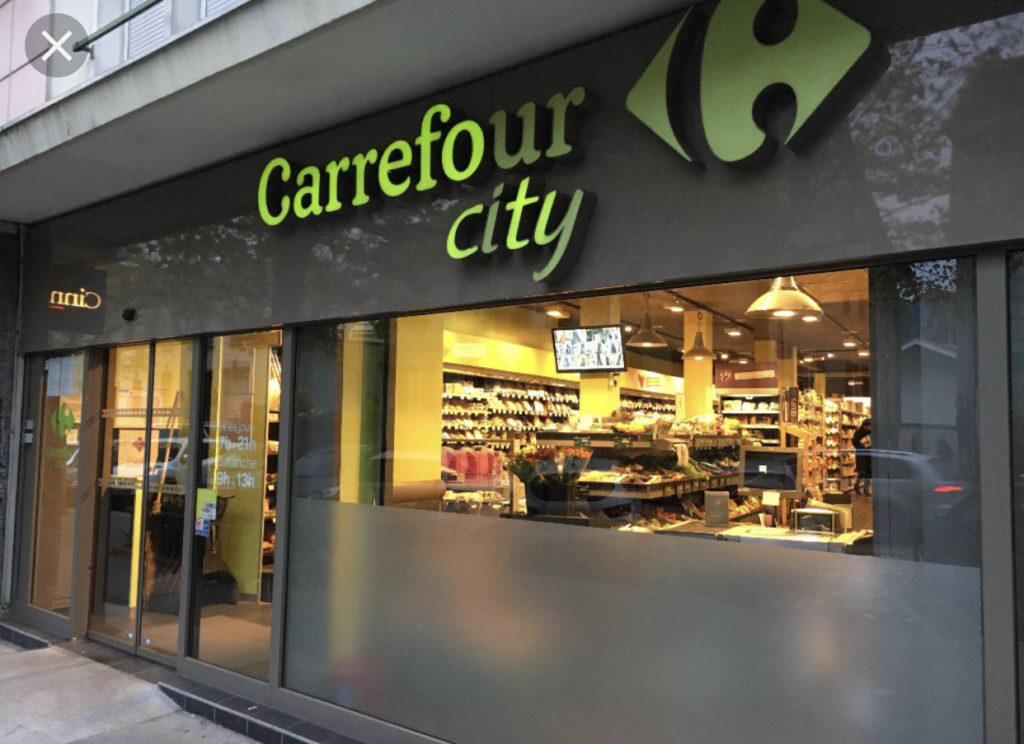
Lunch usually became an on-the-go meal purchased at a mini-supermarket like Carrefour. (Carrefour means crossroads in France).
What is Carrefour? There isn’t really an equivalent of Carrefour or Marks & Spencer in the U.S. These are giant grocery/store chains, like a Target, but in many cities and towns there are smaller storefronts of these stores (sometimes called “Carrefour City” or “M&S Simply Food”). Carrefour is common in France & Belgium; M&S in the UK but also in several European countries.)
These stores have a large selection of prepared foods, snacks, & drinks that ranges from pretty good to gourmet.
Wandering through a Carrefour can be a cultural experience in and of itself–what are the current popular snack foods? How many different kinds of yogurt can one offer?
So, for instance, when we arrived in Paris, we dropped our bags at our hotel room (read this post about where we stayed and why), and then headed out to walk around.
We were hungry, so we stopped at the Carrefour nearest our hotel (they are dotted throughout Paris). My daughter got a baguette sandwich, and I chose this lentil/falafel salad. It was delicious, full of legumes, nuts, and veggies. Very filling and just what I needed.
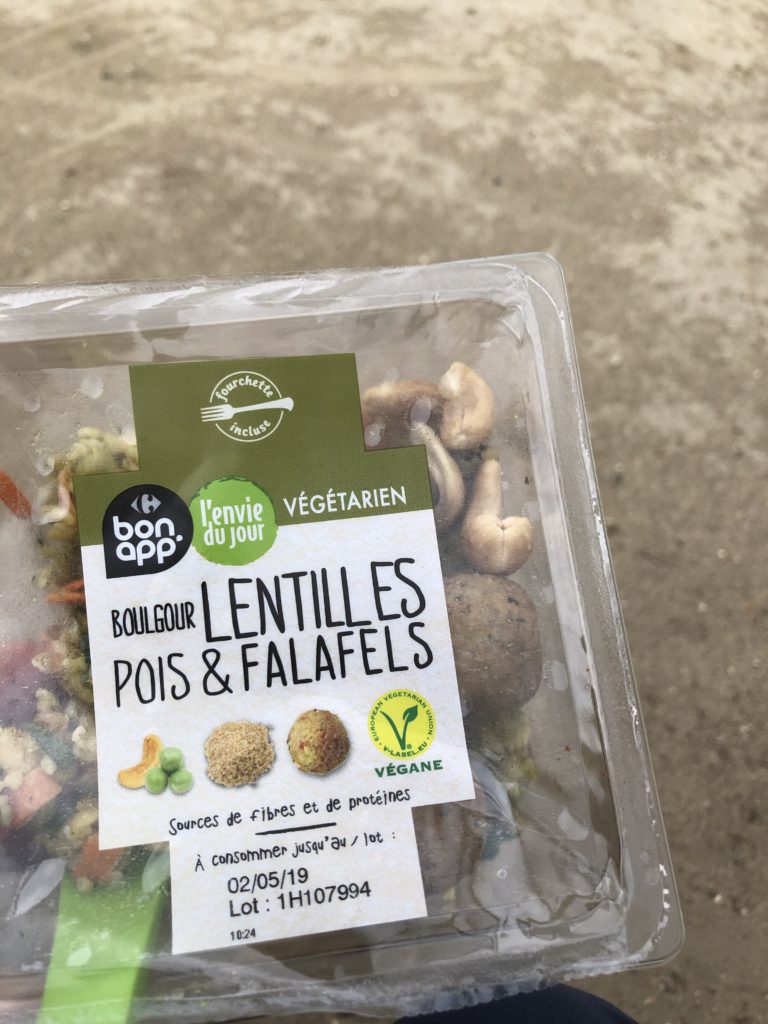
We also got two apples and some bottles of water (more on that later). We started our walk to the Eiffel Tower, very near our hotel, and stopped in the park that runs in front of the Eiffel Tower.
Depending on how much we were purchasing, our Carrefour visits cost around $8-15 per time, and covered more than a meal for two, and usually snacks for our hotel room or wandering times.
Eating out in France
We would eat out at a restaurant about once a day, depending on our travel. And sadly, I have to say, we didn’t have a “great” meal in Paris.
(I am sharing a couple of restaurants here I have read about since we got back, to bookmark for our next visit).
Next time I will plan better so that we can ensure at least one outstanding meal.
For instance, one day we stopped into a restaurant that had been recommended to us, and it was about 5:30 p.m. I thought, we probably don’t need a reservation this early because all the French tend to eat late.
Well, even though Google (which must be right!) listed the restaurant as open from noon-11 p.m., when we stopped in it was completely empty.
I thought, wow, we are going to be the absolute first ones here! A waiter came out after a few minutes to tell us that they didn’t open for dinner until 7:30 p.m.
So, because we were hungry and not up for a two-hour wait, it was back to the drawing board. We did find a place nearby, and had a decent, but not astounding, meal.
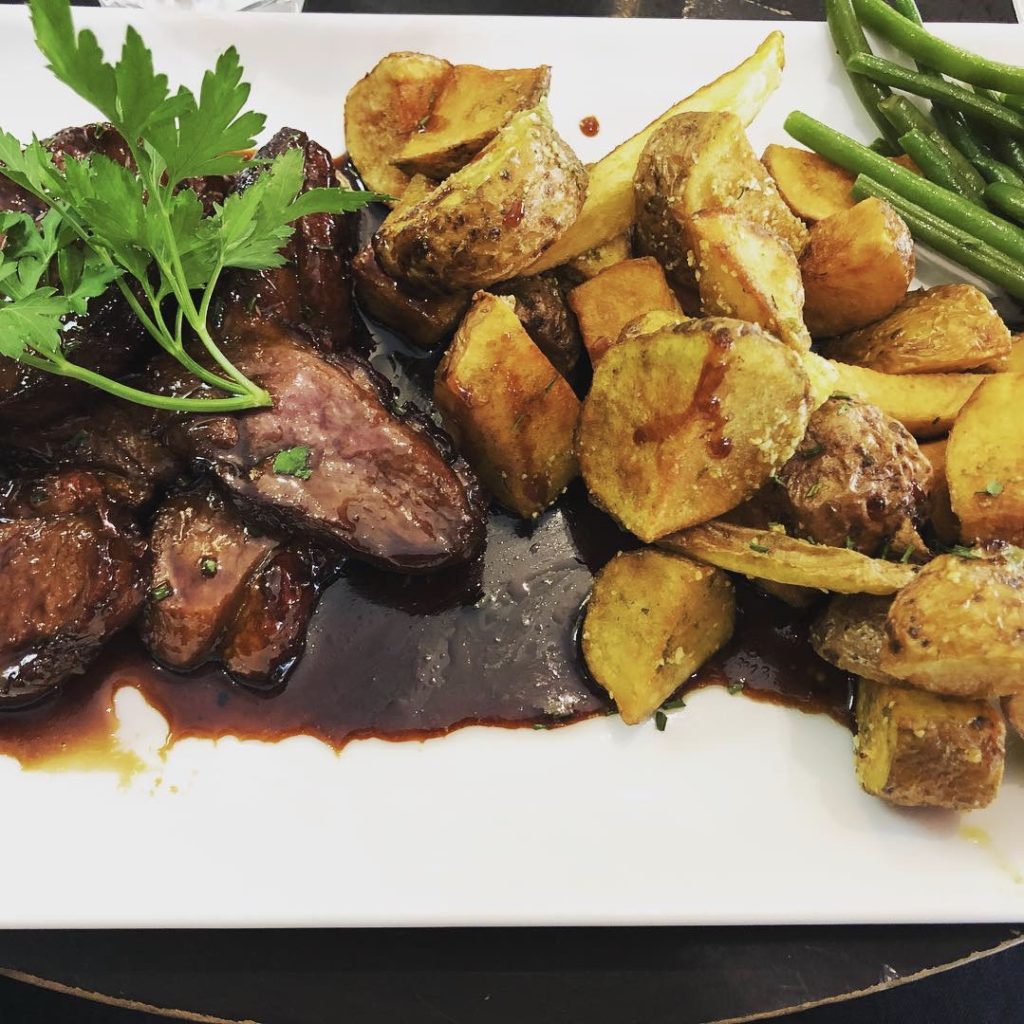
Looking ahead to my next trip to France, I will plan ahead and make sure that we double-check the hours of a restaurant, as well as plan ahead to try one of the ones we know.
Another place that we did not eat at, but I wish we had: one of the cafes at the Musee d’Orsay. The Musee d’Orsay is the wonderful museum housed in a former train station. One of these cafes is top of list for the next visit: ….
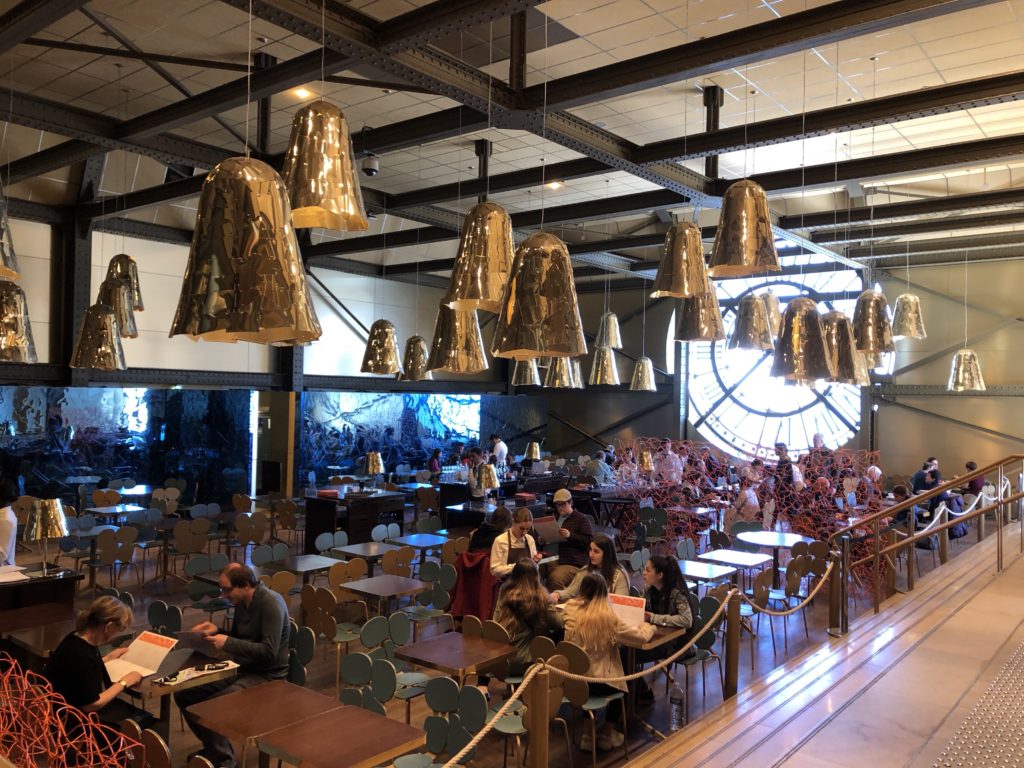
Train Picnics are THE BEST
When we took the Eurostar from Paris-London, we both chose interesting foods from the many restaurants in the Gare du Nord train station. Then we had a “train picnic.”
I chose a quiche from Paul, a patisserie chain with reliable and yummy foods around France.
We also stocked up on bottles of water, and there was likely some chocolate involved. 🙂
Food in London
Once we got to London, we actually ate better and less expensively than in France. Go figure!
When we first arrived in London, we dropped our bags off at our hotel (read about that here).
Eating out in London
We knew we were going to want to have dinner within the next few hours. On our list to return to was Dishoom (“From Bombay with love”), a British chain of Indian food with a very 40s/50s vibe, and reliably delicious Indian food.
After a quick visit to the Design Museum, a free and interesting small museum around the corner, we got to Dishoom Kensington between 5 p.m. and 6 p.m., which I knew would be early, and fortunately we got a table right away.
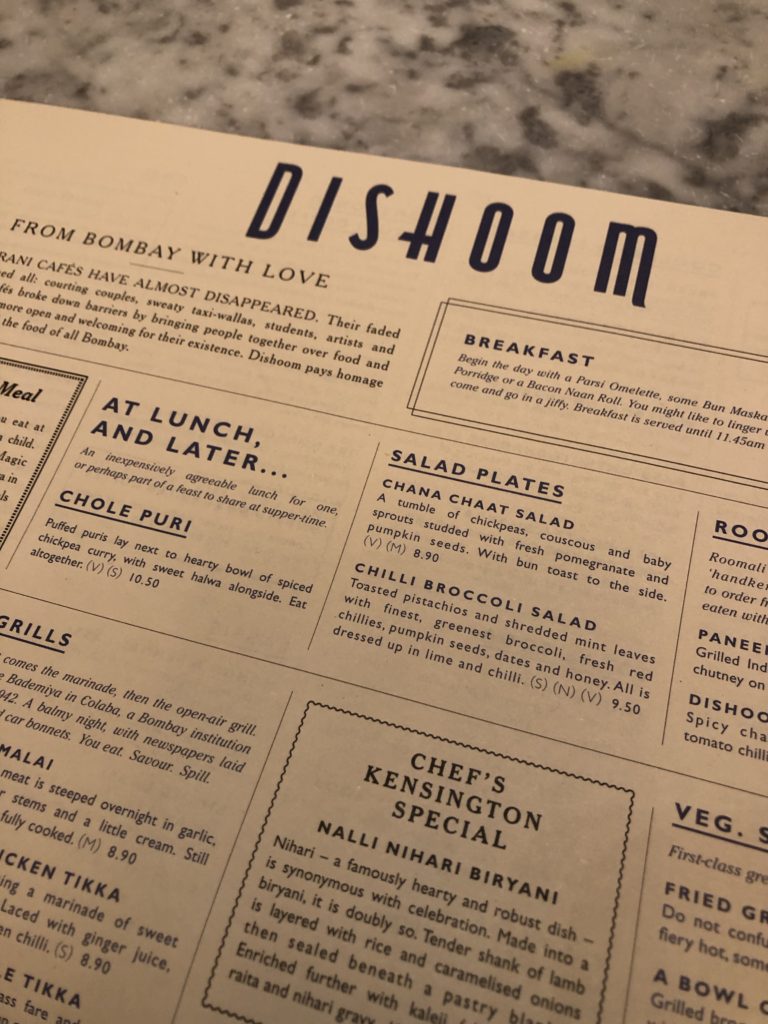
(Fun fact: Dishoom a sound effect in Bollywood movies, the equivalent of “kapow”).
We ordered a selection of things from the menu (lamb, chicken, and maybe chickpea dishes? I can’t remember exactly—some kind of legume, plus rice, and an order of samosas). We ate like royalty.
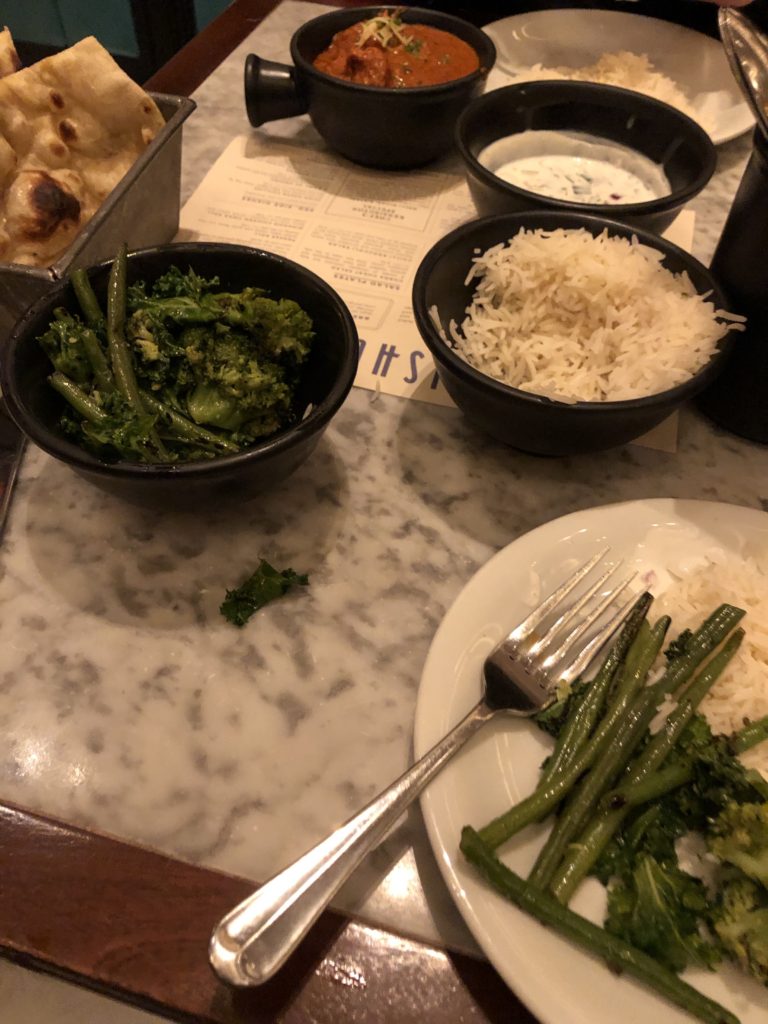
To round out our meal, we had naan, of course. Our waiter assured us that one order of (freshly baked) naan would be plenty. We raised our eyebrows at him, but trusted. Pretty much right after it arrived, we ordered another one. There can never be enough good naan, if you ask me. So delicious.
Our total for this feast for two? Less than $45.
Another repeat restaurant was Poppies’ Fish & Chips. This is one of the best and most authentic fish & chips shops. The original Poppies location is near to Spitalifields Market.
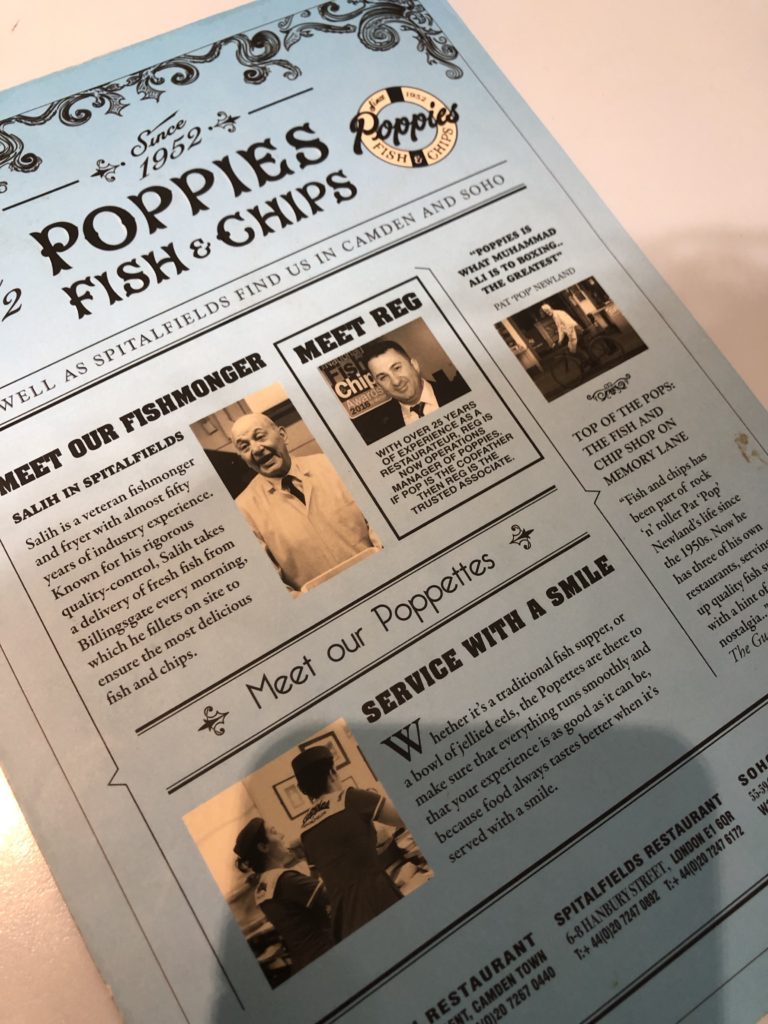
We ate a huge meal at Poppies. (I don’t think we got drinks) for $41. It surprised me how high this was, compared to our feast at Dishoom. If we had taken out (which is quite fun here, as they wrap your fish & chips in paper), it would be less expensive, but we wanted to sit down inside.
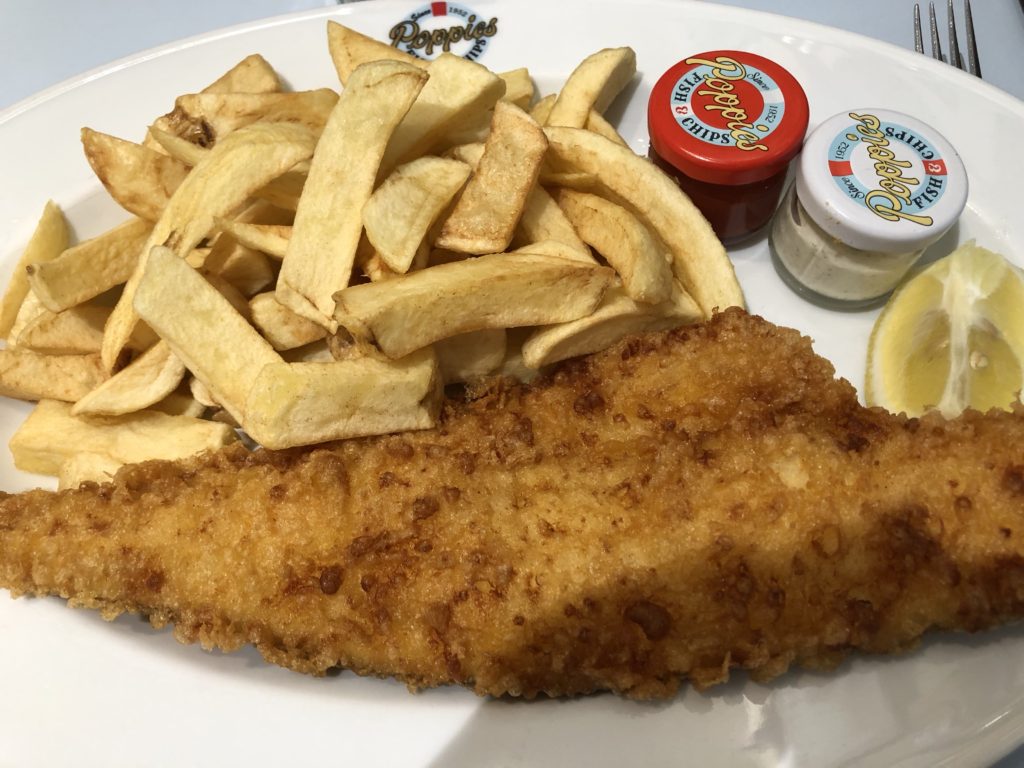
Tipping in Europe
Here is one very lovely thing about dining out in Europe: tipping is less than rare, and not expected. Apparently wait staff are paid well enough without tips, and it’s not a “thing” at all.
(Dishoom in fact is considered one of the best UK employers overall to work for, according to a survey.
Food halls/markets
The “food hall/market” types of storefronts in London (and throughout the UK) are chiefly Marks & Spencer, or M&S. Other chains include Tesco, Sainsbury, and Waitrose (the latter here is more high end).
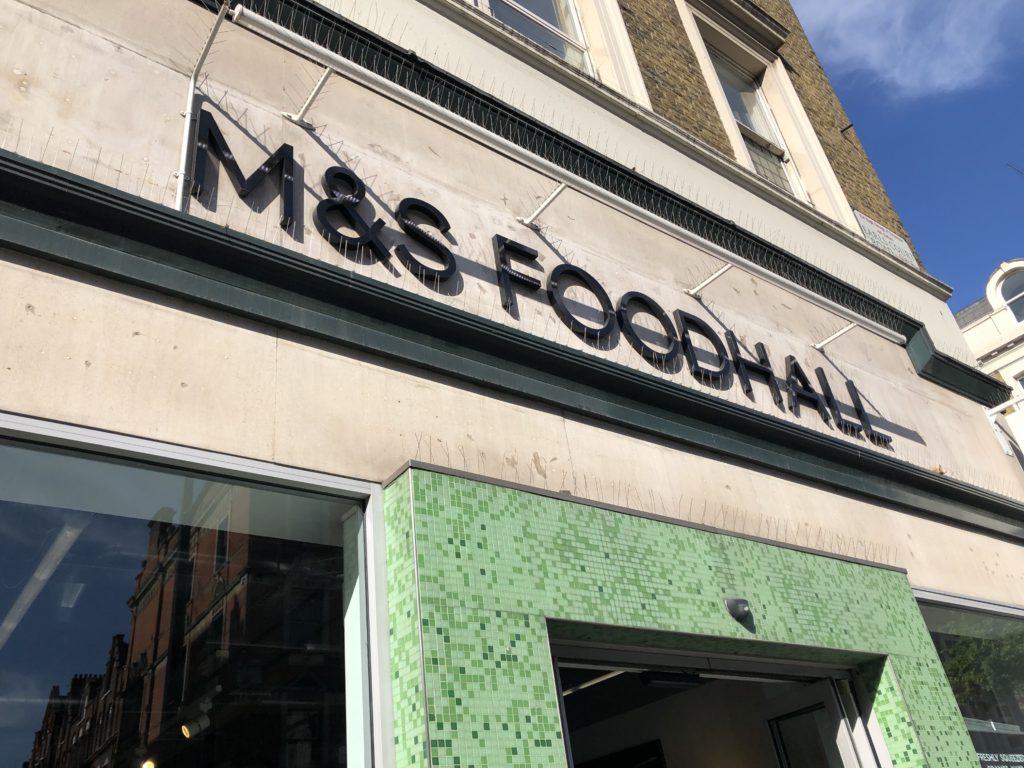
Having the M&S and other chains here points up one disadvantage of not staying in an Airbnb: no ability to heat up food.
When we rented our flat in London way back in 2010, our usual dinner was a selection of entrees from the M&S near our apartment building, and heated up in the kitchen microwave. Chicken tikka was a frequent favorite, but we also enjoyed shepherd’s pie. I did miss the ability to have that, and I wish hotel rooms often had a fridge & microwave. Note to Premier Inn: consider it?
However, you can still eat extremely well from the prepared foods that do not need to be heated, from salads to sandwiches to tea treats.
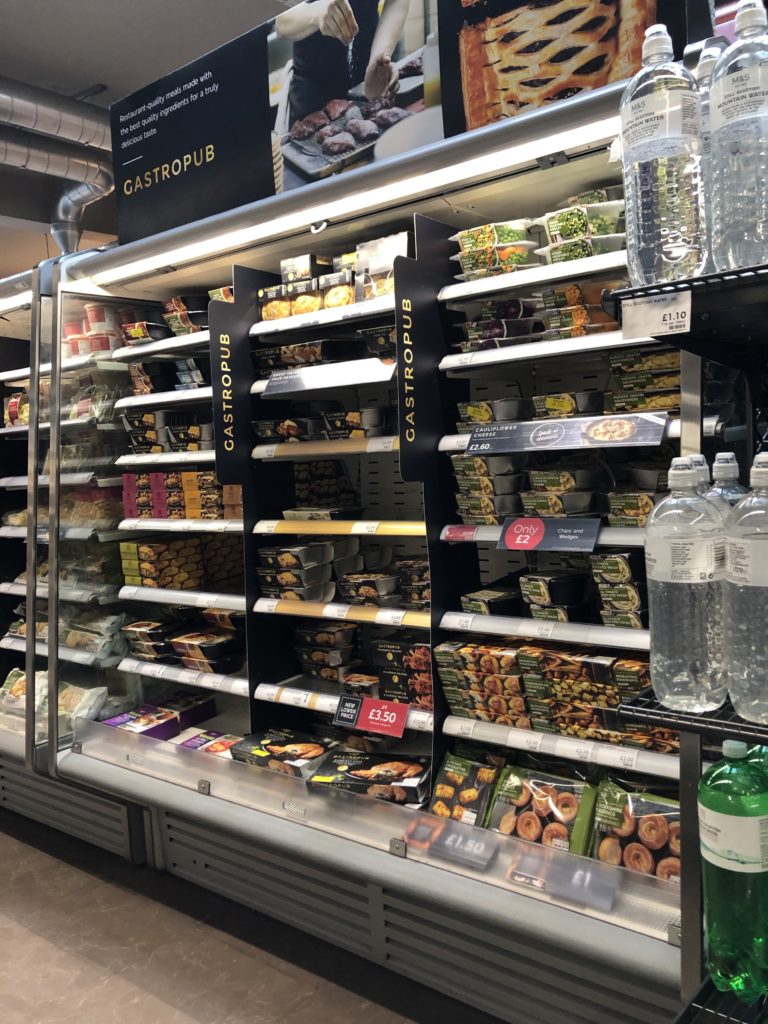
I’m not going to even defend this, because no defense is needed: at least one of the evenings, scones, clotted cream, and blackcurrant jam was “dinner.”

Breakfast of Champions
As I mentioned in my “stay” post, we added breakfast onto our room at the Premier Inn. Breakfast cost about $11 per person per day, but it was well worth the cost.
Breakfast at Premier Inn includes a large buffet of well-cooked and presented hot & cold foods, with tea, coffee, and other drinks on demand. When we were in London, we always ate a very hearty breakfast, and that would keep us full for a long time before we needed to eat again.
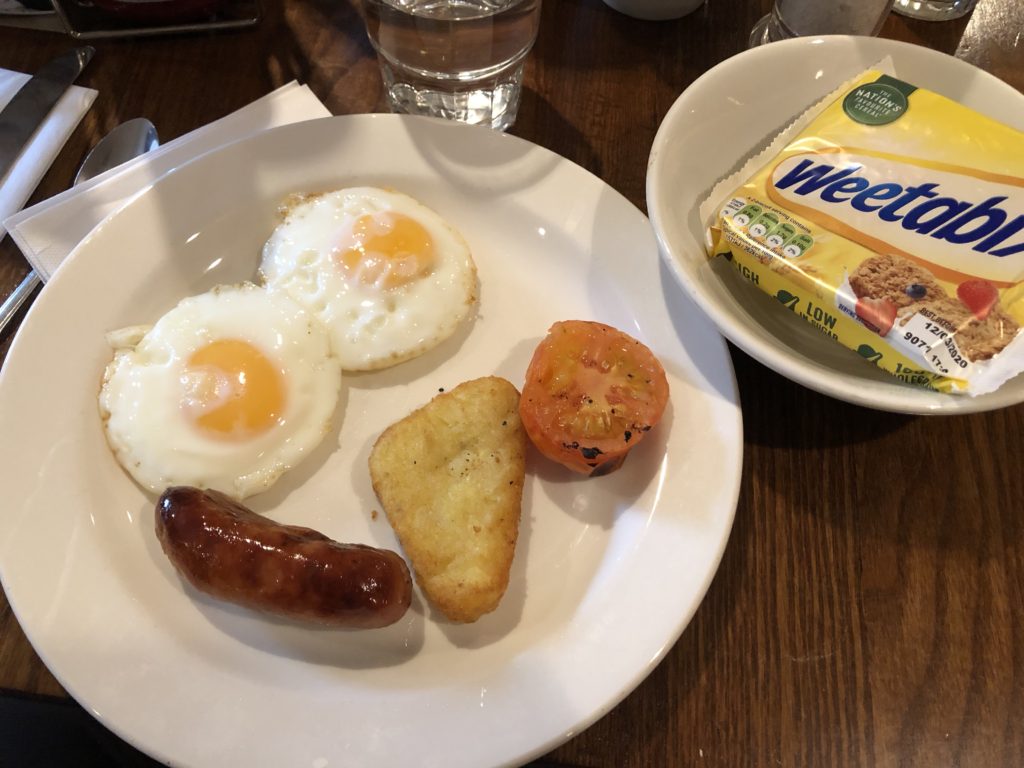
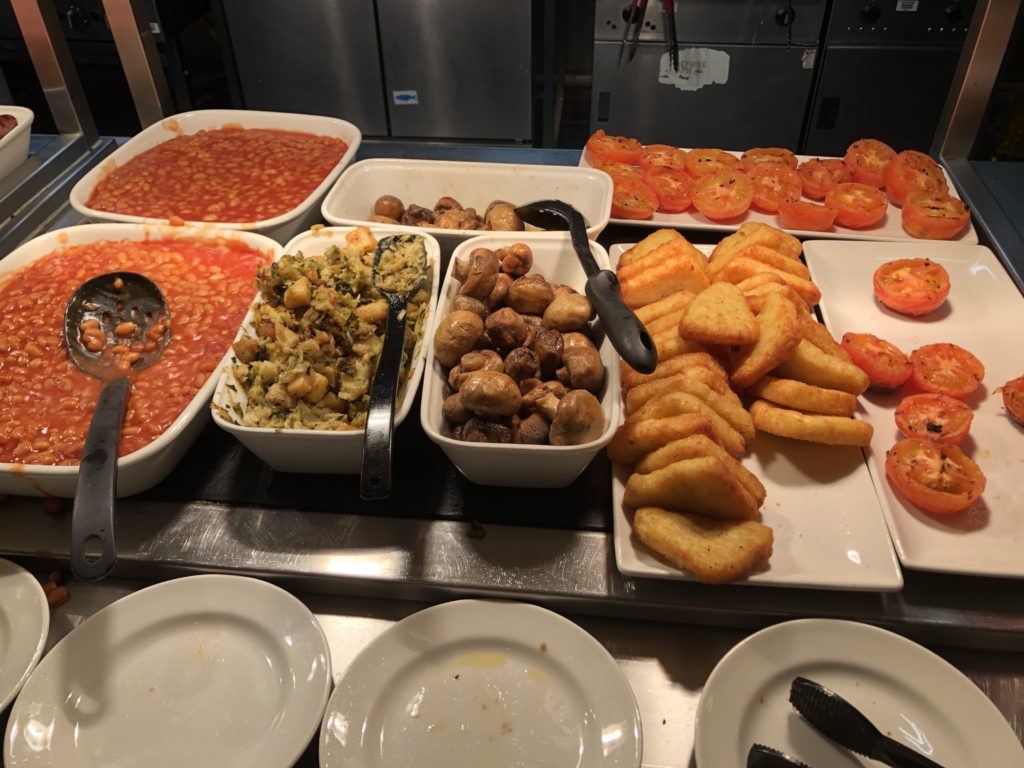
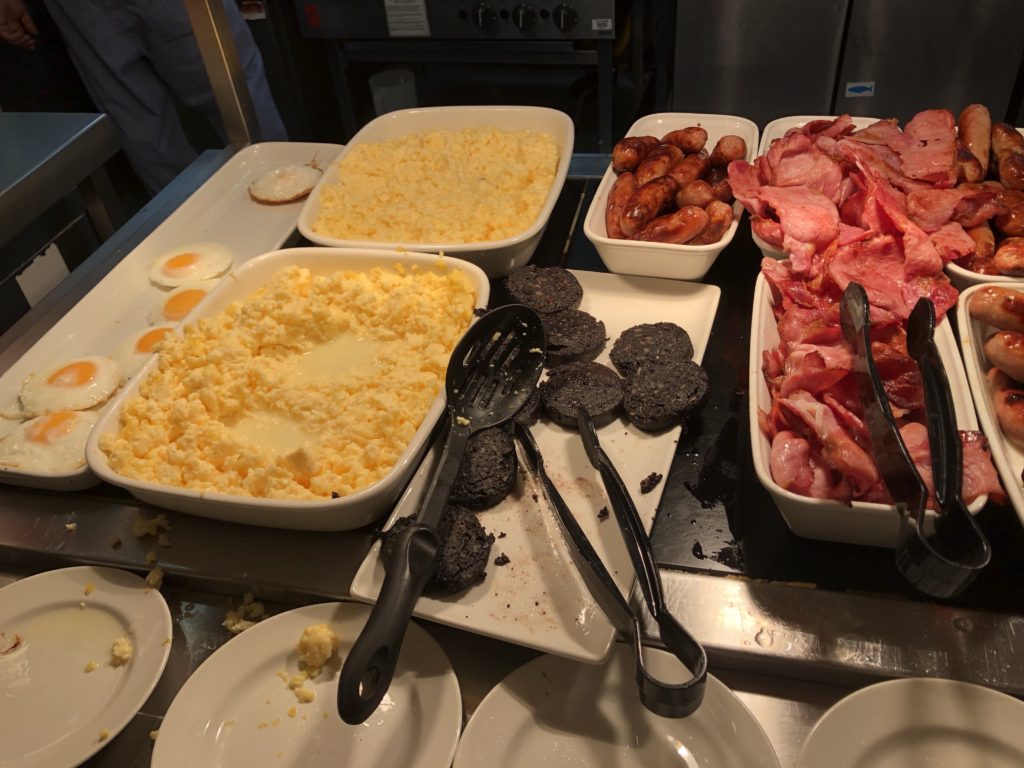
Random food notes & locales in London
*Ben’s Cookies, with locations around London and the UK, is surprisingly good. (and there is one location–NYC–in the USA). We purchased a small box, and they were delicious and held up well during the several days. The cookies reminded me of Insomnia cookies, a staple these days on college campuses, but they tasted much better.
*markets are a great place to consider eating a meal or sampling different foods while sightseeing or shopping. Two that are worthwhile:
1. Borough Market is popular for this, but it has gotten much more crowded than when I was last there. On this trip we arrived around lunchtime, and it was packed. We did end up having a delicious meal from one of the stands (I had a roasted chicken wrap that was amazing). We also had some delicious cheese and bread. If you’re going to visit Borough Market, I recommend arriving at an “off peak” time to avoid the crowds.
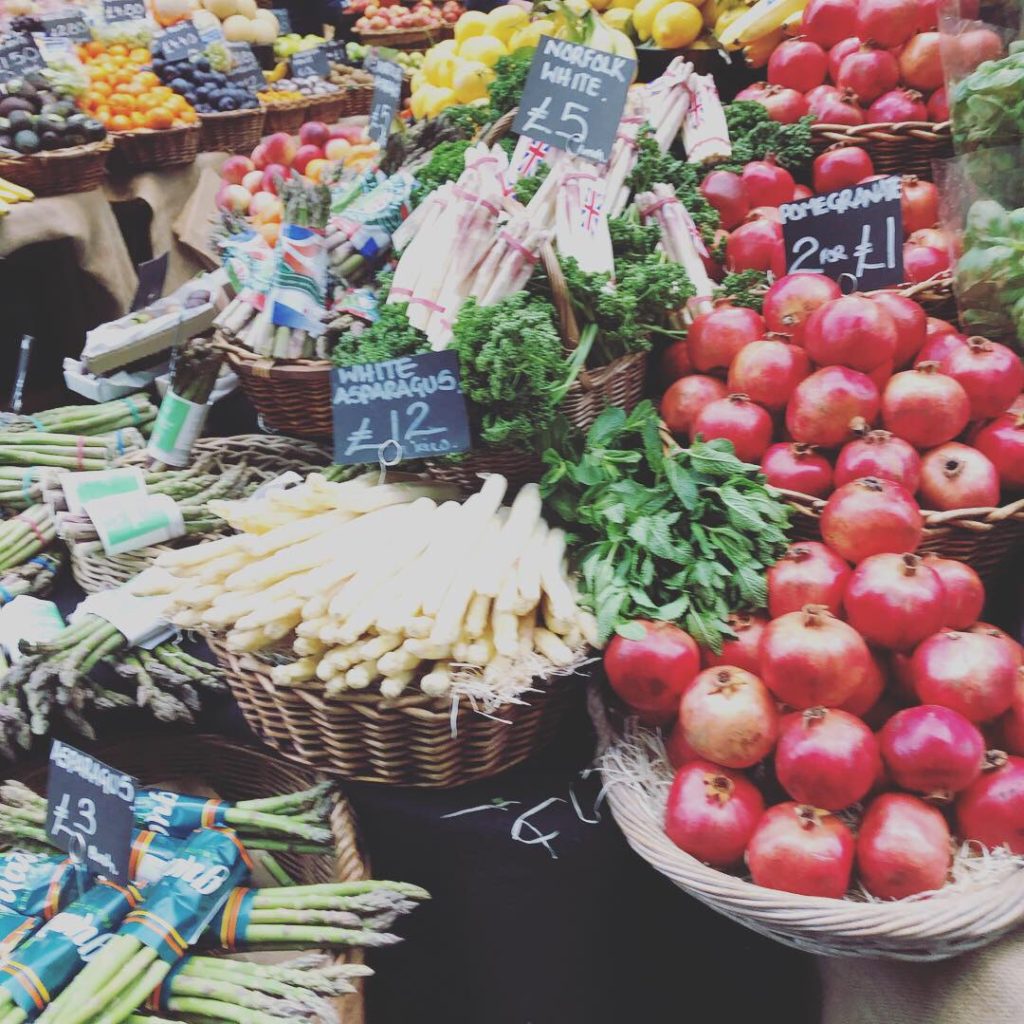
2. Spitalfields Market. I love Spitalfields so much, and food is the least of the reasons, but the food choices are amazing.
Spitalfields is not quite as big and crowded as Borough Market, but also has more non-food shopping in and around the market.
There are lots of food stands there to try, but since we were already planning on Poppies, we didn’t. Next visit we will consider trying a different fish & chips shop, and then try out one or more of the food stands.
A small but money-saving hack on water bottles
This only seems obvious once you discover it, but if you are going to stock up on water bottles for your hotel room, a train picnic, or other needs, head to the water section of the food hall/mini-supermarket, rather than at the front by the prepared foods.
So, for instance, an approximately 16 oz. bottle of water at the front of the store would be 50 Eurocents, but a much larger, 1.5 L bottle (about 50 oz), would be only 21 cents.
Have snacks, will travel …
If I have to say there is one thing that I was neglectful on this trip, it was having snacks on hand.
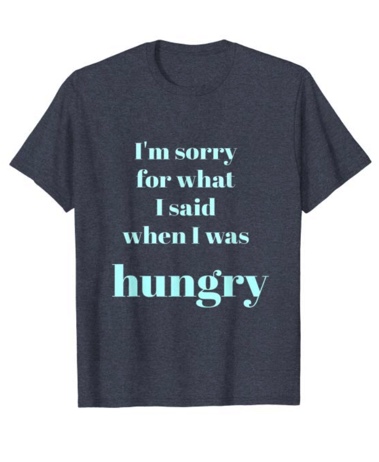
I should have had more non-perishable packages of nuts, trail mix, and other healthy snacks for hunger emergencies.
So note to self for next time: have maybe six servings of healthy, non-perishable, snacks on hand for the trip (and refill as needed).
Now it’s your turn. Do you have any suggestions for me for easy healthy non-perishable snacks to have on hand during travel?
And do you have a “food theory” when it comes to eating or eating out when you’re traveling?
